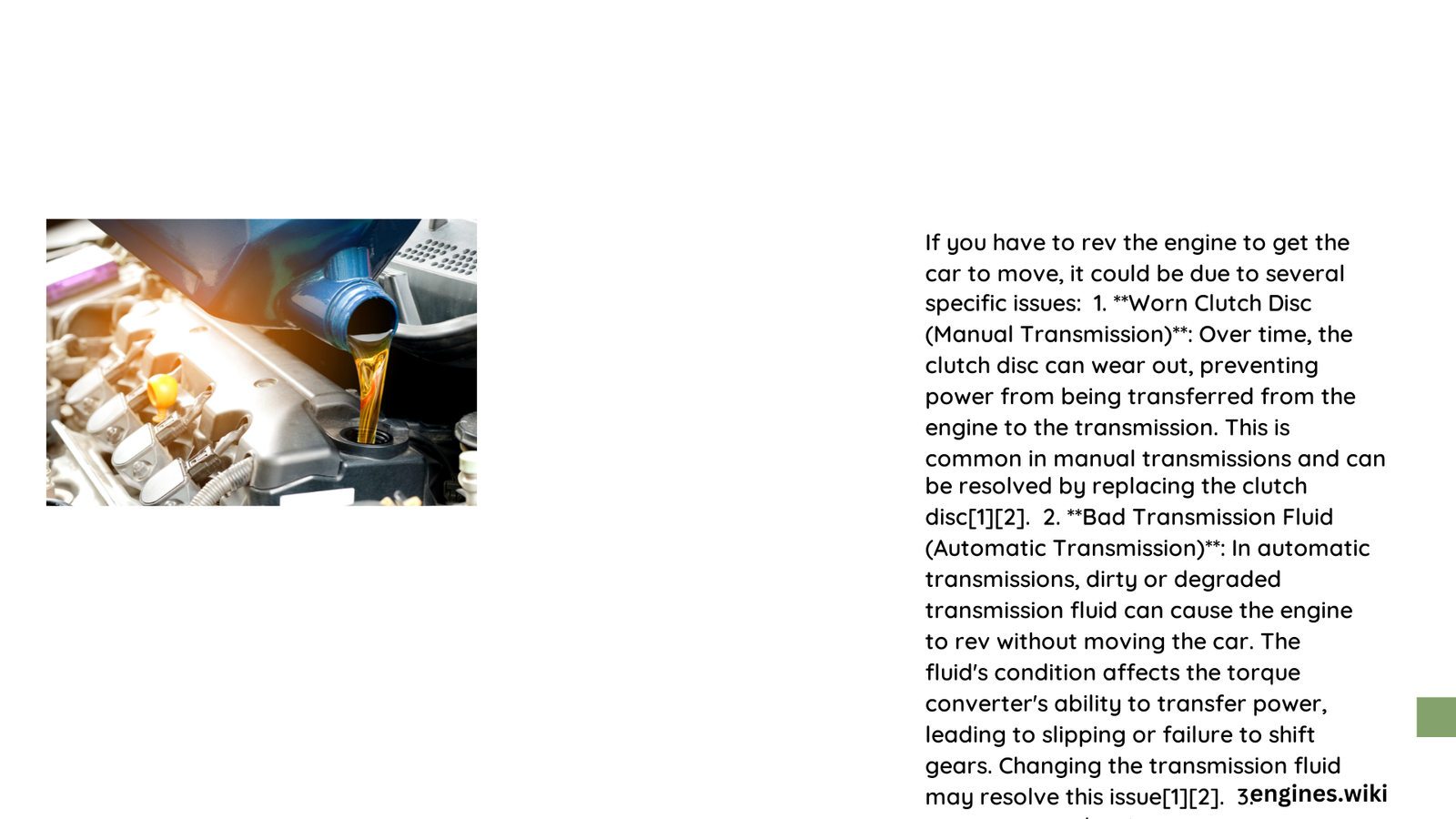Revving an engine to get a car moving involves understanding complex mechanical interactions between engine power, transmission systems, and driver input. Drivers must strategically manage engine RPMs to generate sufficient torque, engage transmission gears, and initiate vehicle movement while balancing performance, fuel efficiency, and mechanical longevity.
What Happens When You Rev an Engine?
How Do Engine RPMs Influence Vehicle Movement?
Engine revving is a nuanced process that varies significantly between manual and automatic transmission vehicles. The fundamental goal remains consistent: generate enough rotational energy to overcome vehicle inertia and initiate movement.
Key Factors in Engine Revving
| Transmission Type | RPM Range | Movement Characteristics |
|---|---|---|
| Manual | 2500-3500 RPM | Direct driver control |
| Automatic | 1500-2500 RPM | Computer-managed shifts |
Why Do Different Vehicles Require Different Revving Techniques?
Vehicle engine characteristics dramatically influence revving strategies. Smaller engines like inline-4 (I4) configurations typically require higher RPM ranges, while larger V6 and V8 engines generate substantial torque at lower RPMs.
Performance Considerations
- Smaller Engines (I4)
- Higher RPM threshold (2500-3500 RPM)
- Quicker acceleration potential
-
More aggressive power delivery
-
Larger Engines (V6/V8)
- Lower RPM threshold (1500-2000 RPM)
- Smoother power transmission
- Enhanced low-end torque
What Mechanical Processes Occur During Engine Revving?
When a driver revs an engine, several critical mechanical interactions happen:
- Clutch Engagement
- In manual transmissions, the clutch connects/disconnects engine from transmission
-
Allows gear selection and power transfer
-
Hydraulic Pressure Generation
- Automatic transmissions use hydraulic systems
- Electronic control units manage gear shifts based on RPM and vehicle conditions
How Does RPM Affect Vehicle Acceleration?
RPM levels directly correlate with acceleration rates and torque output:
- Low RPMs (1500-2000)
- Smooth, fuel-efficient movement
- Minimal engine stress
-
Ideal for normal driving conditions
-
Medium RPMs (2500-3500)
- Balanced power and efficiency
- Moderate acceleration potential
-
Recommended for daily driving
-
High RPMs (4000-7000)
- Maximum power generation
- Fastest acceleration
- Increased fuel consumption
- Higher mechanical wear
What Are Potential Challenges in Engine Revving?
Mechanical Limitations
- Excessive high-RPM driving accelerates engine wear
- Aggressive revving increases fuel consumption
- Transmission components experience additional stress
Pro Tips for Effective Engine Revving
- Understand your specific vehicle’s mechanical characteristics
- Follow manufacturer-recommended RPM ranges
- Practice smooth, controlled acceleration
- Regular maintenance prevents mechanical complications
Conclusion

Mastering engine revving requires understanding your vehicle’s unique mechanical design, transmission type, and performance characteristics. By strategically managing RPMs, drivers can optimize vehicle movement while preserving mechanical integrity.
